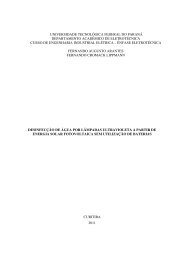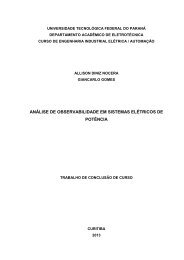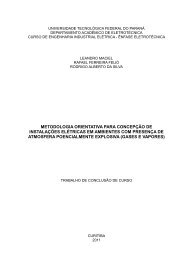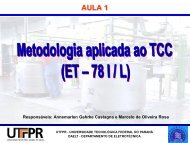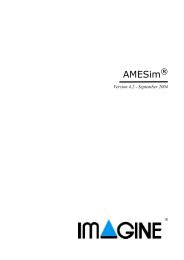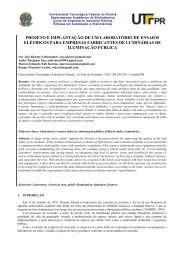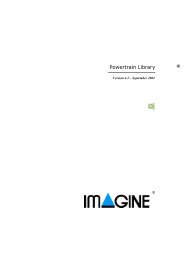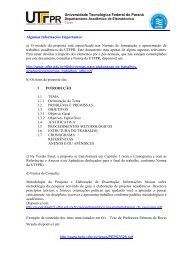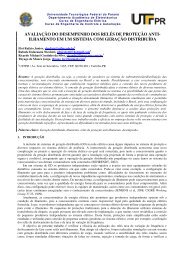Using the AMESim MATLAB/Simulink Interface - NUPET
Using the AMESim MATLAB/Simulink Interface - NUPET
Using the AMESim MATLAB/Simulink Interface - NUPET
- No tags were found...
Create successful ePaper yourself
Turn your PDF publications into a flip-book with our unique Google optimized e-Paper software.
<strong>Using</strong> <strong>the</strong> <strong>AMESim</strong> <strong>MATLAB</strong>/<strong>Simulink</strong> <strong>Interface</strong>5.1. IntroductionThe main difference between <strong>the</strong> two interfaces is that co-simulation interface uses two (ormore) solvers, while <strong>the</strong> standard interface uses only one. This means that <strong>AMESim</strong> and<strong>Simulink</strong> use <strong>the</strong>ir own solver for <strong>the</strong> co-simulation interface whereas <strong>the</strong>y both use <strong>the</strong><strong>Simulink</strong> solver for <strong>the</strong> standard interface. Ano<strong>the</strong>r difference is that with <strong>the</strong> standardinterface <strong>the</strong> <strong>AMESim</strong> part is seen as a time continuous block in <strong>Simulink</strong> and in <strong>the</strong> cosimulationit is a time discrete block. Since <strong>the</strong> co-simulation block is seen as a discreteblock it makes this interface very suitable for discrete controllers implemented in <strong>Simulink</strong>controlling an <strong>AMESim</strong> model.The figure below shows in more detail how <strong>the</strong> interfaces work. In <strong>the</strong> standard interface<strong>the</strong> <strong>AMESim</strong> part of <strong>the</strong> system gets state variables and input variables from <strong>Simulink</strong> andcalculates state derivatives and output variables. The process of exchanging thisinformation is controlled entirely by <strong>the</strong> <strong>Simulink</strong> solver. In this case one could say that weimport <strong>the</strong> equations into <strong>Simulink</strong>.In <strong>the</strong> co-simulation case, <strong>the</strong> only exchanged variables are <strong>the</strong> input and output variables.The rate of exchange is in this case decided by a parameter that <strong>the</strong> user decides. As <strong>the</strong>name indicates <strong>the</strong> model is not entirely in <strong>the</strong> hands of one software (<strong>Simulink</strong>) but it is aco-operation between two (or more) software. It is important to realize that by exchangingonly input and output variables at a certain sample rate <strong>the</strong>re is a loss of information.Figure 16: The two <strong>AMESim</strong>-<strong>Simulink</strong> interfaces, exchange of information.State derivatives<strong>AMESim</strong>subsystemOutput variablesInput variables<strong>Simulink</strong>subsystem+solverState variablesNormal interface<strong>AMESim</strong>subsystem+solverOutput variablesInput variables<strong>Simulink</strong>subsystem+solverCo-simulation interfaceThis can be compared with <strong>the</strong> difference between a continuous and a sampled controller.Normally <strong>the</strong> smaller sample rate used <strong>the</strong> closer to <strong>the</strong> continuous result we get. Ano<strong>the</strong>rpossible problem is that <strong>the</strong> we loose information about possible cross couplings between<strong>the</strong> system since we do not communicate information about states and state derivatives.18



